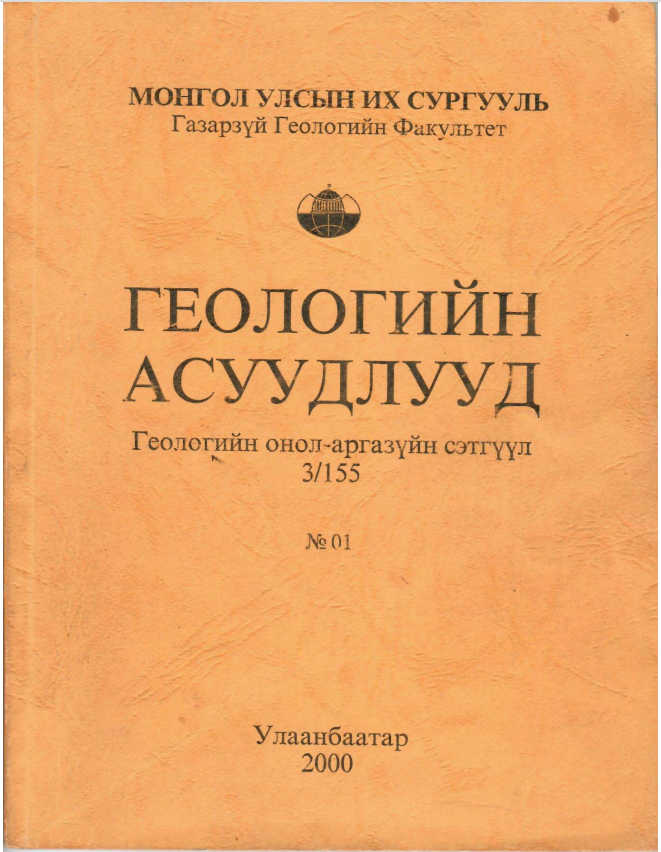MESOZOIC COMBUSTIBLE MINERAL RESOURCE BASINS IN MONGOLIA
Abstract
In Mongolia these are the combustible mineral resources in Upper Paleozoic and Mezozoic sediments. Most large basins with coal and all basins with oil bearing shales and petroleum are connected with Mezozoic continental formation. Usually, the biggest basins of combustible mineral resources concentrate in central, south and eastern intermountain troughs of Mongolia in Upper Mezozoic continental deposits. On Mongolian territory there are classified 17 ranks of combustible resources (petroleum, natural gas, oil shale and coal) by geological structure. From these basins in central, south and eastern parts of Mongolia the biggest basins are Mezozoic age. Every type of Mezozoic combustible mineral resources of Mongolia show individual nature of distribution. Mezozoic coal basins are distributed in different aged geological formations. Jurassic coal basins can be found usually in central and north, parth in west and south parts of the country. Little numbers of the deposits are in the eastern parts. In the Jurassic period coal accumulations happened in west and south parts of the territory. In the Cretaceous time coal accumulations was in the central, south and eastern parts. Oil shales in Lower Cretaceous are like coal basins distributed in central, eastern and south parts of the territory. Petroleum basins of Mongolia found in intermountain troughs in single geological formations, with associated coal and oil shales. These petroleum basins found in the Mezozoic intermountaine troughs are elongated from the eastern of Mongolia (Tamsag) into south-west (Baruun Khuurai) and north-west (Uvs nuur) parts. The Mezozoic sediments contain combustible mineral resources accumulated in large basins of continental lacustrine environment was three stages of non-continious paleotectonic and paleogeographic development. In the first stage of formation produced continental depressions which accumulated prolivium and lacustrine sediments. These lacustrine sediments were rich in organic matter and were able to generate thick oil shales. Intermountain lake basins filled with terrigeneous materials, and lakes became marshy. At this time in central, eastern and southern parts of Mongolia thick accumulations of organic material was laid dowm, to produce coal. At the final stage generated marsh lakes in intermountain trouhgs according to paleotectonism and climate. Poor organic matter filled with coarse terrigeneous materials, to be in contact with Lower and Upper Cretaceous.
Downloads
References
D.Bat-Erdene. 'Nature of distribution and formations conditions of coal basins in the Mongolia orogenic belt Doctorate thesis., Moscow., 1992
V.E.Shuvalob "Stratigraphy of Mesozoic deposits of central Mongolia" Leningrad., 1975.
Downloads
Published
How to Cite
Issue
Section
License
Copyright (c) 2023 Геологийн асуудлууд

This work is licensed under a Creative Commons Attribution-NonCommercial-ShareAlike 4.0 International License.


